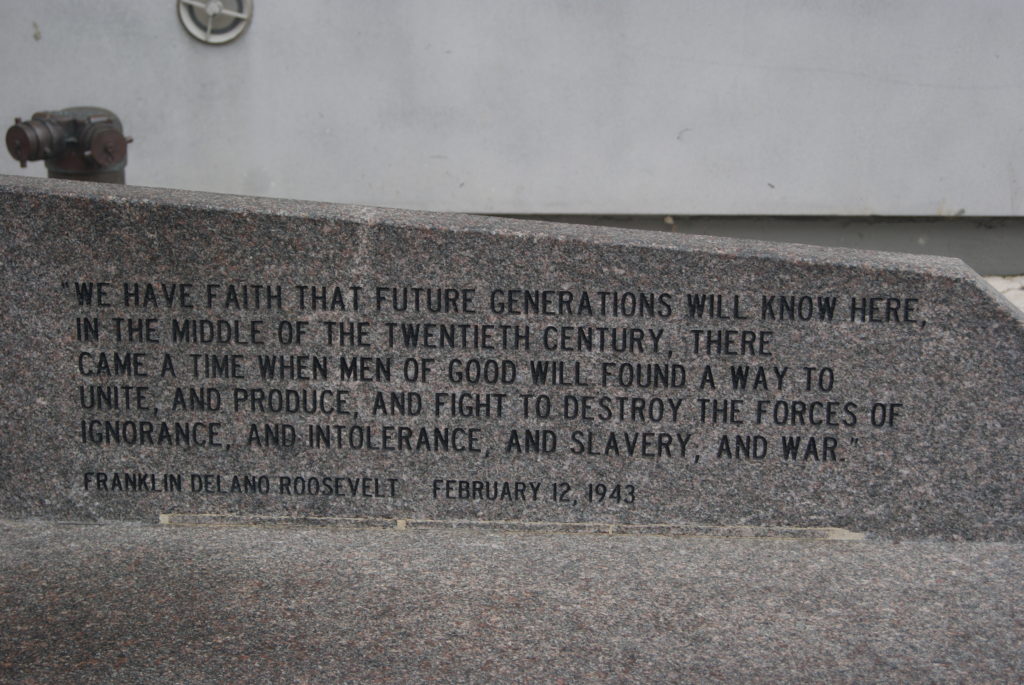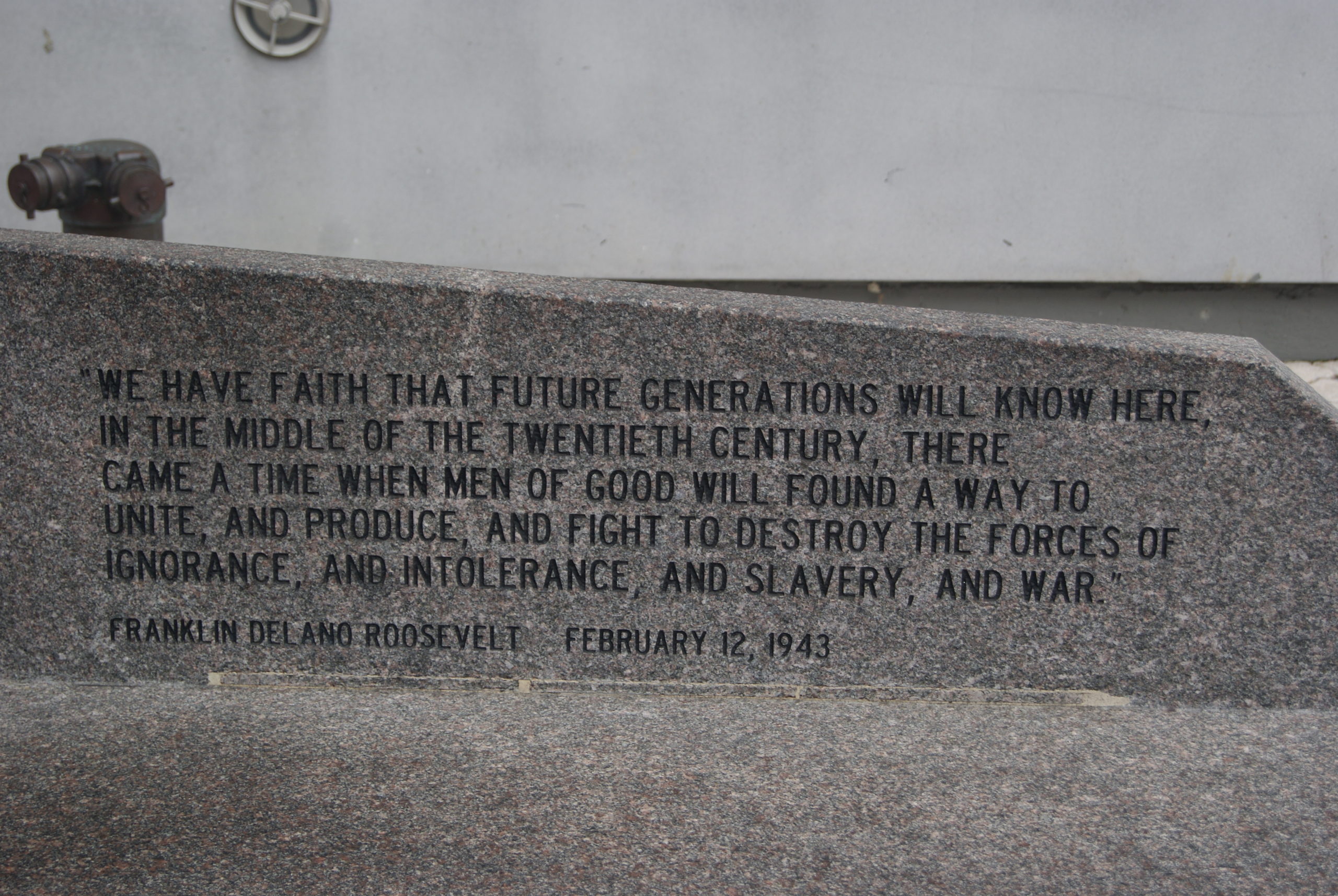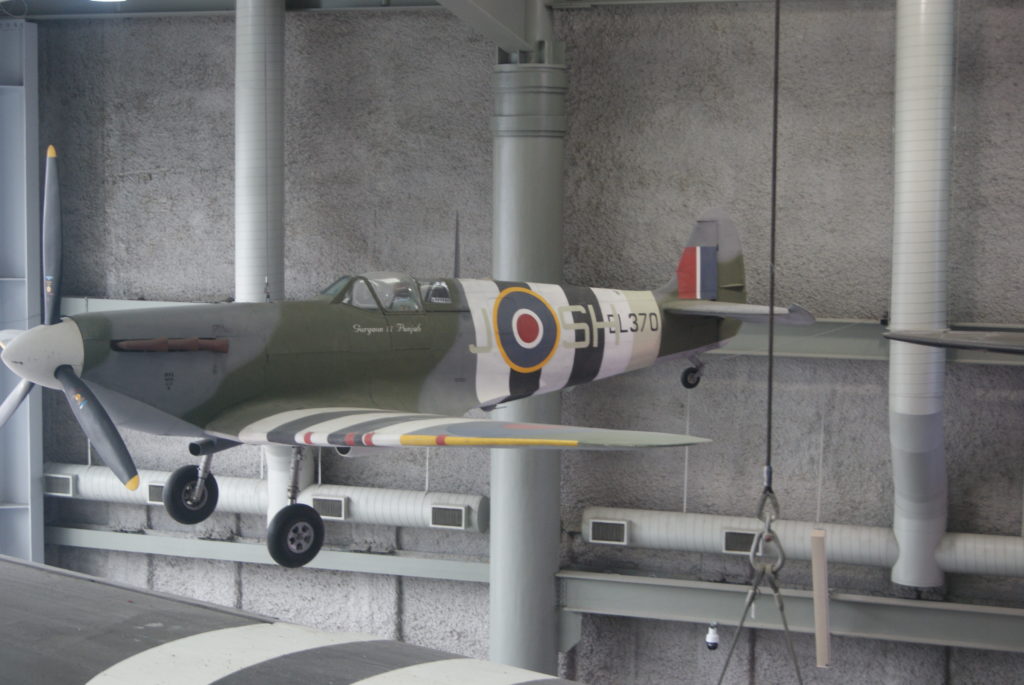Al lost a 101-year-old friend during Covid. I didn’t even know the guy and I cried during his remote memorial service. He was a veteran of both the CCC and World War Two, a member of what we call the Greatest Generation. If you don’t know how they got that name, I recommend a visit to the National World War Two Museum in New Orleans.
I usually confine my blog posts to books and local history. But Al and I spent a few days in New Orleans recently and were just blown away by the WWII museum there.
Entering the Museum
Before you even enter the museum, it tugs at your heartstrings. Near the entrance stands a statue of Anne Frank, to remind you of the kind of evil the Greatest Generation had to confront. Near the Frank statue is a statuary tableau of a group of pilots preparing for a bombing run.
They look so young, and yet seasoned and tough in a way that nobody under thirty should ever look. The average WWII fighter pilot was only twenty-two years old. Fewer than half of them lived to see the end of the war.
The massive museum consists of five buildings. You could see the highlights in half a day, although you need a full day to really do it justice. And Al is such a history fanatic that we could have spent a second day there. I recommend buying both the general admission ticket and the extra-cost ticket for the Beyond All Boundaries 4D Experience.
Beyond All Boundaries
Beyond All Boundaries is not to be missed. As advertised, it is an immersive experience of not only sound and visuals, but 3D features and sensory effects as well. For example, when bombs are exploding on the screen, your seat will shake as if you are right in the middle of the bombing. The show provides the background of the war and the events leading to it. It frankly discusses initial American reluctance to join the fight, even after Germany invaded Poland and France and began bombing Great Britain. It then gives and overview of the war itself, including the importance of the home front.
The tone of Beyond All Boundaries is unabashedly patriotic. It portrays the war as a battle of democracies versus autocracies, America as the savior of the free world, and our WWII generation as legendary heroes and heroines. The exhibits in the rest of the museum touch lightly on some of the more complex moral aspects of the war. But the overall approach of the museum is to portray inspiring heroism. Honestly, I really liked that.
Other Museum Highlights
Like most modern museums, the WWII strives to be interactive. After you purchase your ticket, you board a train where you receive a dog tag card. Your card is coded with the name of a WWII participant. You can tap it on many exhibits in the museum, to find out whether your participant was part of the exhibit’s subject, and what he or she was doing. I got Sgt. John Basilone, who earned the Medal of Honor for his bravery at Gaudalcanal and was killed at Iwo Jima after additional acts of superhuman courage.
The whole story of the war is told in multi-media exhibits that allow the visitor to take in as much or as little detail as desired. Many artifacts are on display. There are also video exhibits from the war era, and built environments that let you wander through reproductions of some of the war’s scenes. I especially liked the Battle of the Bulge winter forest.
Planes, Planes, Planes
The museum owns and displays acres of decommissioned military vehicles, particularly aircraft. Al loves that stuff, so he was in heaven. Me, not so much. I get pretty bored just looking at airplanes. They all look the same to me.
My favorite part was in building five, the Freedom Pavilion. There, I found an interactive display that presents the visitor with real moral dilemmas from the war. For example, you are the commander of Allied forces planning for D-Day. If you bomb railyards as well as rail lines and bridges, you increase your chances of a successful invasion, but you will cause more civilian casualties. What would you do? What did previous visitors say they’d do? And what did the real decision-maker do? I could have played that game all day. But the museum was getting ready to close, and Al had already taken about a hundred pictures of airplanes, so it was time to go.
Definitely don’t miss this museum if you are in New Orleans. And don’t worry if you’re with someone who will spend the whole day there. They have a cafeteria called the American Sector, which provides good food, alcoholic refreshment, and period music.
For more information about the museum, check out their website.





